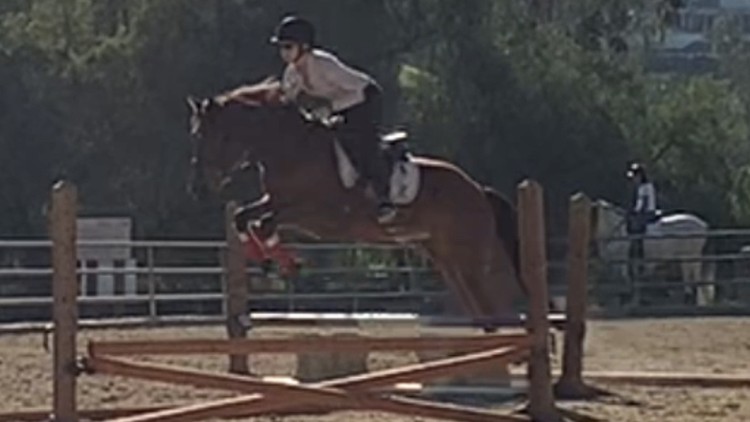
What you will learn
Jumping mechanics
Proper break and release
Feel to a fence
Finding distances
Description
This is not a comprehensive jumping course and is not intended to serve in the place of lessons or a trainer–but instead is meant to supplement your expanding knowledge base about riding as you move from novice towards intermediate.
All jumping riders should always have a ground person observing, for safety. Proper attire and tack for both rider and horse are crucial to performance. Even the most experienced jumping riders and trainers can make fatal mistakes, having extra eyes watching can sometimes lessen the severity.
The goal of my training program is to enhance a rider’s connection to the horse, and to use trust rather than fear to overcome obstacles–both literal and metaphorical. The sport of jumping horses looks easy when you watch the Olympics on tv–but in reality, it is extremely technical, requiring immense multitasking abilities to use legs, hands, hips, arms, shoulders, back, and your eyes differently from one another all at the same time. That’s a lot of “moving pieces” to keep track of.
Some trainers believe in punishment. I do not believe in negative reinforcement or any form of punishment to the horse, but especially not when the rider has caused the issue. Horse and rider must work as a team; the horse knows when the rider has made a mistake, and they do not appreciate being reprimanded for things that their rider caused them to do. Doing so can create “strong” horses that pull, resist the bit–the rider’s hand, horses that run through their distances, or bolt from the fence or stop dirty. Brute force with whips has been emphasized for corrective use but I do not believe it necessary In 99% of jumping interactions if a horse is taught through trust rather than fear.
An 11 year-old novice rider named Charm will demonstrate the woes of learning to jump, as her errors are catalogued and corrected. Across a few lessons, you will observe how she caused her pony’s jumping behavior problems and then subsequently corrected them.
Content
